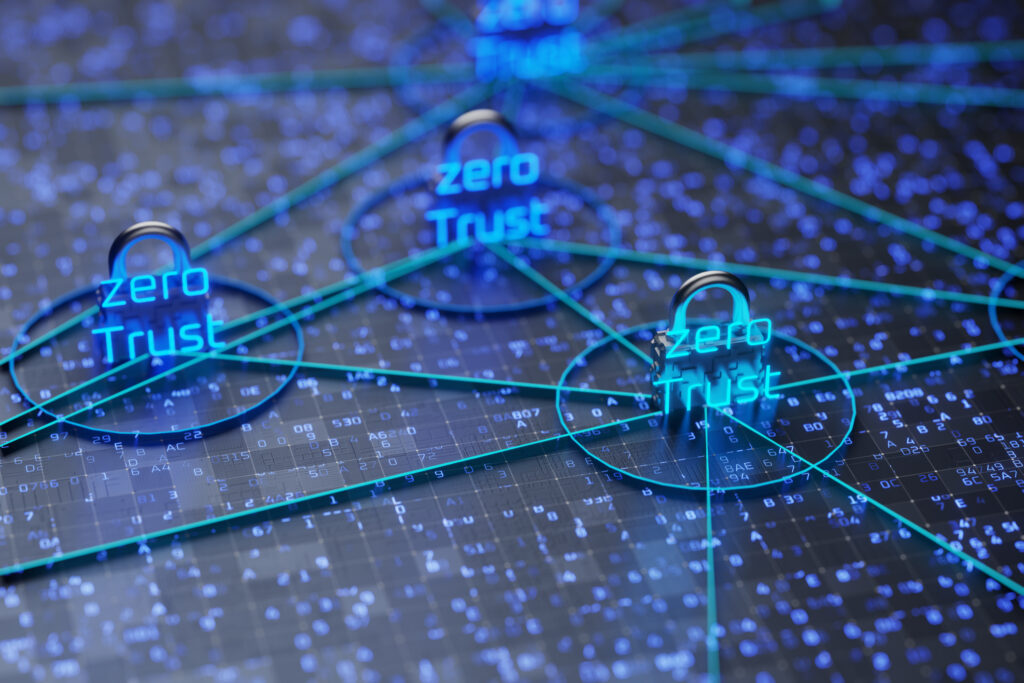Demystifying Zero Trust: A Modern Approach to Cybersecurity
In the ever-evolving landscape of cybersecurity, organizations are constantly seeking new strategies to safeguard their data and systems from evolving threats. One such strategy that has gained significant attention in recent years is “Zero Trust.” However, it is not a one-size-fits-all solution; it is a comprehensive approach to security that requires careful planning, integration of various technologies, and a shift in mindset.
Zero Trust is often described in different ways, but at its core, it is a data-centric approach to securing an organization’s environment. Historically, organizations relied on the “Castle and Moat” model, where they secured their data by building strong defenses around a centralized location. However, in today’s distributed and cloud-driven world, this approach falls short. Zero Trust focuses on ensuring that data remains secure and that individuals only have the necessary level of access, continuously assessing and evaluating their access rights based on their actions.
Common Misconceptions About Zero Trust
One common misconception about Zero Trust is that it is a single, magic solution that can be purchased and implemented to guarantee security. In reality, Zero Trust is a framework that requires multiple integrations and interoperability between various security solutions. It is not a quick fix; it is a long-term journey that demands organizational commitment and investment.
Another misconception is that Zero Trust can be implemented overnight. It is essential to understand that it is a gradual process that evolves over time, aligning with an organization’s unique needs and requirements.
Defining Zero Trust
The significance of Zero Trust stems from the ever-changing threat landscape and expanding attack surface. As cyber threats become more sophisticated, and remote work and cloud adoption grow, organizations must adapt. Zero Trust ensures that security is not limited to the perimeter but is applied at every level of the environment. It acknowledges that an organization is only as strong as its weakest link and aims to validate user authorization continually.
It is effective in comparison to traditional perimeter-based models like the “Castle and Moat” because it acknowledges that today’s organizations operate beyond the perimeter, with remote work and cloud services becoming the norm. Zero Trust treats every access request as potentially compromised, focusing on securing users, devices, networks, applications, and data at all times.
Zero Trust is not a replacement for other security approaches but rather complements them. It aligns with various security frameworks and can be seen as an overarching strategy that encompasses other security perspectives. Organizations can tailor their security posture to incorporate Zero Trust principles while maintaining their existing security strategies.
Best Practices for Zero Trust
Zero Trust has its roots in addressing insider threats and identity-related risks. By starting with the assumption that breaches will happen, and user identities may be compromised, the framework leads organizations to implement measures to protect against unauthorized activities within the network. The goal of this approach is to help prevent attackers from accessing sensitive data.
When implementing a Zero Trust strategy, the first crucial step is planning. Organizations must identify their unique risks, understand their network’s layout, and prioritize protection based on data and user access.
This starts with taking a holistic view of IT and the people who rely upon your systems. A way to visualize this is to think of these areas as the “pillars” of your computing environment:
- Your users
- Your devices
- Your applications
- Your data
- Your network
Each of these elements must be continuously validated and secured to uphold the Zero Trust model effectively. Next, ensuring that the chosen security solutions are interoperable is essential to achieving a holistic and contextual view of the network.
Finally, you must understand the impact on users and plan appropriately. A poorly planned Zero Trust model can lead to disruptions in the user workflow, while a well-executed one enhances consistency and provides a predictable experience for users, whether they are in the office or working remotely.
Zero Trust is not a quick fix or a standalone solution; it plays a vital role in enhancing an organization’s security posture in an evolving threat landscape. By ensuring you take the right approach to Zero Trust, you can effectively protect your digital assets and ensure everyone has what they need to get the job done.
If you would like to talk more about how an effective Zero Trust framework can help your organization, let’s talk.
